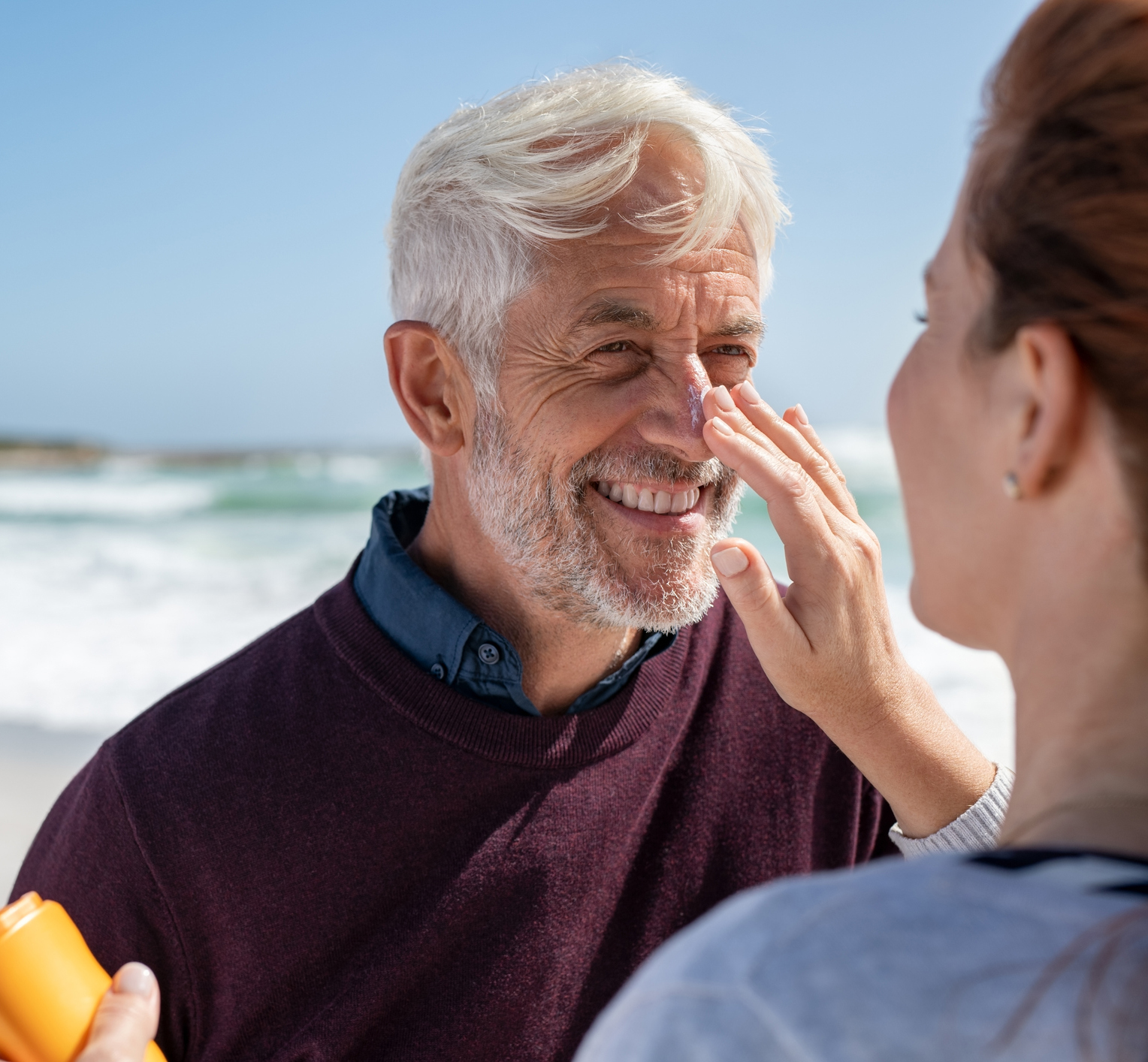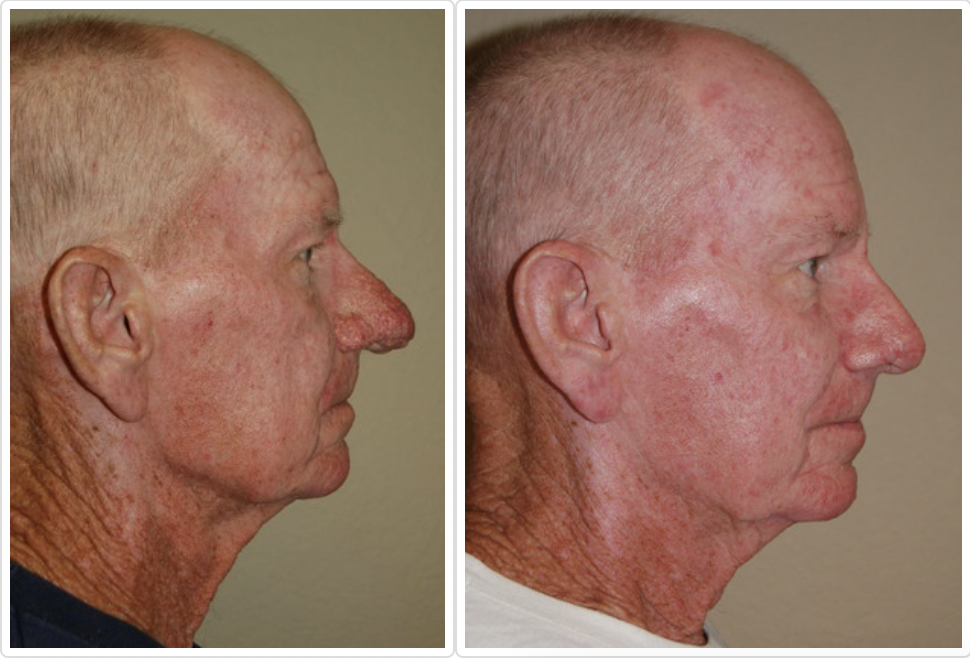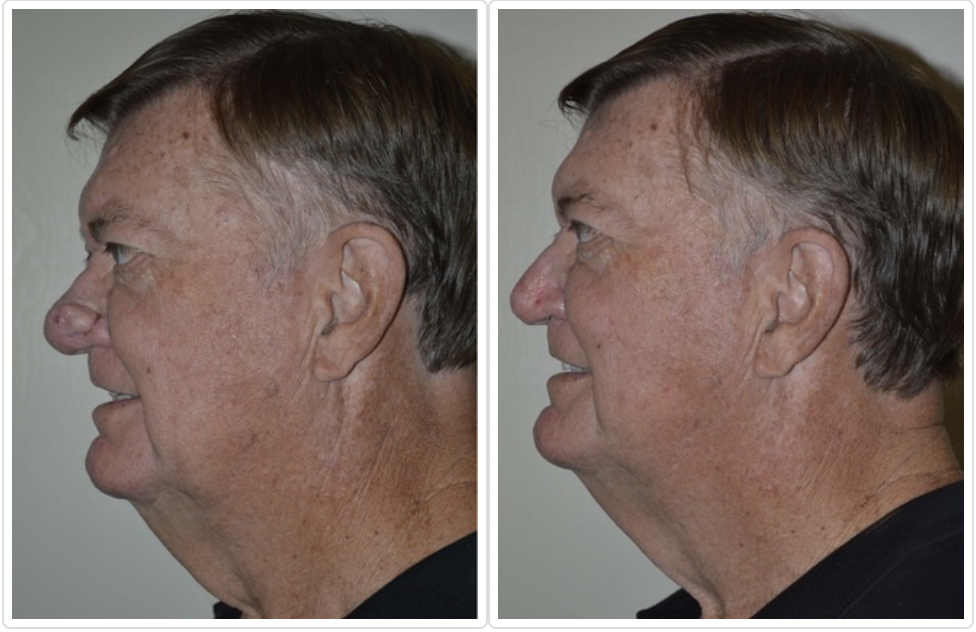Rhinophyma
in Tampa and St. Petersburg, FL
Feeling self-conscious about the size and shape of your nose is difficult enough. Living with a nose that is affected by rhinophyma, though, makes it almost unbearable. Rhinophyma is a medical condition that affects the skin and shape of your nose making it appear red and enlarged. The condition also adversely affects the skin of your nose. Treatment for your rhinophyma is available from Dr. Dean G. Davis of Davis Facial Plastic Surgery, serving the residents in Florida including Tampa, St. Petersburg and the surrounding towns. While we offer many financing options to our patients, Davis Facial Plastic Surgery does not participate in any medical health insurance plans.

What Is Rhinophyma?
Rhinophyma is a condition in which the nose becomes bulbous, red, large and studded with nodules. It occurs from the infiltration of granulomatous, usually because of acne rosacea on the nose that is left untreated for several years. This disorder is characterized by a fibrous thickening and prominent pores on the nose; sometimes, papules are present. Rhinophyma is associated with acne rosacea, a common skin condition, and can have a strong psychological effect on an individual because of its appearance.

What Are the Causes?
Although the cause is unknown, the disorder is generally considered a severe type of rosacea. A relatively rare condition, it involves the presence of many oil glands and the thickening of the skin on the nose.
Risk Factors
Age and gender are the main risk factors for rhinophyma. The condition is more common in men than women, and the initial stage typically starts between the ages of 30 and 50. Rhinophyma gradually develops over time. Those who are at the highest risk of developing this disorder are middle-aged men.
Other risk factors for rosacea and the development of rhinophyma include light-colored skin, eyes, and hair. If there is a history of rosacea in your family, this also increases your risk of developing the disorder.


Symptoms of Rhinophyma
Rhinophyma is usually considered a later phase of rosacea. Some of the symptoms that occur in the earlier stages include:
- Blotchy, red areas in the middle of your face
- Gritty or burning sensations in the eyes (ocular rosacea)
- Inflammation of the eyelids (blepharitis)
- Redness on the inside of the eyelids (conjunctivitis)
- Random facial flushing
- Swelling blood vessels in the cheeks and nose (telangiectasia)
- Very sensitive skin
As rosacea worsens, so can the symptoms. Additional symptoms arise with the development of rhinophyma. The oil glands and connective tissue on the nose, for instance, may increase. Some other changes that may occur to the nose include:
- Enlarged pores
- Gradual growth into a bulbous, swollen shape
- Numerous oil glands
- Reddish skin tone
- Rough, yellowish and waxy appearance of the skin
- Thickening of the outer layers of skin
These symptoms may worsen over time as the disorder is left untreated. Symptoms may also be cyclic, with different symptoms alternating between flare-up periods.
Complications of Rhinophyma
The primary complication of rhinophyma is emotional distress. The condition can cause severe facial disfigurement in the advanced stages. Individuals who suffer this disorder could have intense anxiety because of their appearance. Some might isolate themselves from others or become recluse.
Diagnosis of Rhinophyma
In the early stages, rosacea might be confused with other skin conditions, such as acne. However, rhinophyma often occurs after the diagnosis of rosacea. The unique characteristics of rhinophyma allow most doctors to diagnose the disorder without ordering tests. A skin biopsy is only occasionally needed to confirm the diagnosis.
Treatment of Rhinophyma
Medication
In the early stages, rhinophyma could respond to medications. Some medicines are also successful in relieving several of the symptoms associated with rosacea, such as:
- Oral antibiotics that reduce redness and inflammation (minocycline, tetracycline, and erythromycin)
- Topical medications that reduce swelling (benzoyl peroxide, metronidazole, azelaic acid, and tretinoin)
- Oral isotretinoin, for severe acne, to stop the sebaceous glands from producing oil
Surgery
Tissue overgrowth and enlarged blood vessels can cause disfigurement, which may become long lasting if the affected area remains untreated. In most cases, surgery to reduce this area is the most-effective treatment for long-term results. Numerous surgical procedures can be performed to restore an individual’s normal appearance. Using dermabrasion, a laser, a scalpel, electrosurgery or cryosurgery, surgical treatment can:
- Improve your overall appearance
- Reduce enlarged blood vessels
- Extract tissue overgrowth
- Reshape the nose to correct any disfigurement
Outlook for Rhinophyma
Coping with rhinophyma-related symptoms can cause emotional distress and anxiety. Sometimes surgical treatment improves your appearance and eases these symptoms while boosting your self-esteem. However, rhinophyma can flare up again following treatment.
It is recommended that you discuss long-term treatment options with Dr. Davis to avoid future flare-ups and ease your emotional distress and anxiety. Both nonsurgical and surgical methods can reduce the symptoms and thwart disfigurement. Getting treatment during the early stages of rosacea and rhinophyma could yield the best results.
Real Patient Reviews
“I couldn’t be happier with my experience at Davis Facial Plastic Surgery! Since my initial visit with Dr. Davis, he has always shown immense care, and his entire team is truly incredible. Not only is he thoughtful and thorough, but he is attentive and listens to any possible thoughts and concerns. In addition to being very knowledgeable and skilled, he is kindhearted, personable, and sincerely wants the best for his patients. I couldn’t recommend Dr. Davis enough; he is truly the best!” – Rachael M.
How to Prevent Rhinophyma
While there are no known ways to prevent this disorder, there are triggers that irritate rosacea, the underlying condition of rhinophyma. These triggers increase blood flow to the surface of the skin and avoiding the triggers may slow the progression of rhinophyma symptoms.
- Alcohol
- Corticosteroids
- Emotional stress
- Exercise
- Exposure to the sun
- Hot baths
- Hot beverages and foods
- Medications that dilate the blood vessels
- Spicy foods
- Very cold or hot temperatures
How Much Does Rhinophyma Surgery Cost?
During your consultation, Dr. Davis will review your procedure costs. Davis Facial Plastic Surgery does not participate in any medical health insurance plans. If you have any questions about financing your procedure, contact Davis Facial Plastic Surgery. Dr. Davis accepts all major credit cards, CareCredit®, and cash for procedures.
Don’t let rhinophyma affect your life any longer! Contact our Tampa office today to schedule your consultation with Dr. Davis.
